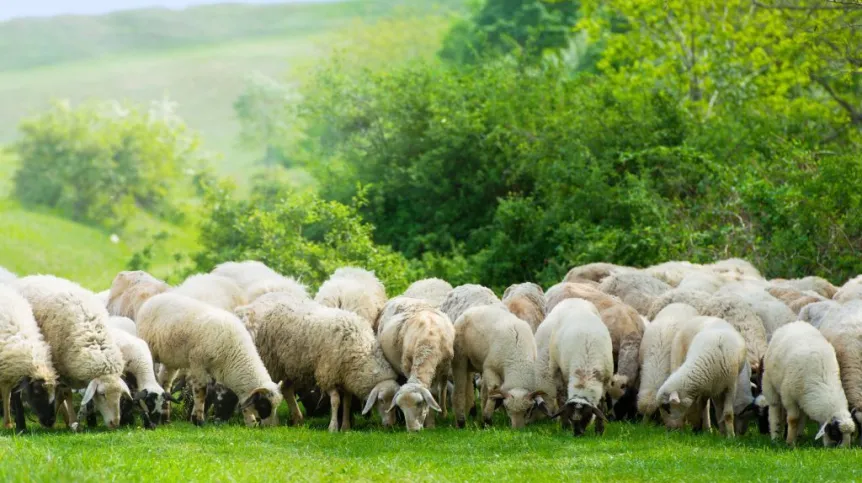
Wasteland landscape left after sheep farming: the soil over-fertilized to the limits of toxicity and plants devoured to the ground, can eventually turn into an oasis of species richness - according to research in the former sheep farms in Wielkopolska.
Today in Poland, slightly over 200 thousand are farmed, though still in the 1980s Poland was sheep-farming power, with even 5 million sheep on pastures. Each sheep farm, in addition to the buildings and pastures, had a pen - fenced area, where the herds were rounded up for inspections. In practice, this meant crowding the animals in a small space, stampeding and devouring plants to the ground, and very intensive fertilization.
The condition of sheep pens after years of disuse has been recently checked by Dr. Przemysław Kurek from the Institute of Botany PAS in Kraków, Dr. Grzegorz Grzywaczewski from the University of Life Sciences in Lublin, Dr. Ryszard Steppa and Prof. Piotr Tryjanowski from the University of Life Sciences in Poznań.
They confirmed that nature abhors a vacuum, and the lunar landscape left after the sheep is literally bursting with greenery. They also examined plant species in the former pens - their number was similar to the neighbouring meadows.
Scientists noted, however, the different sets of plant species in pens, where plants such as sorrel, nettles and cleavers are often found. Its grown specimens cover taller plants like sheepskin - said Dr. Kurek.
In contrast to the meadows and fields, which are regularly mowed and ploughed, abandoned pens allow for the survival of biennials and perennials that do not tolerate mowing and ploughing - noted the biologist.
Inconspicuous pens appear to be a reservoir of species richness. "The explosion of vegetation attracts groups of animals. There are lots of invertebrates: butterflies, bees, spiders ... these places also attract birds" - said Dr. Kurek.
The species depend on the size of the pen and vegetation structure. "If blackthorn has time to grow there, you will soon get red-backed shrike. If there are ruderal plants (plants inhabiting specific habitats near humans - PAP), you will fond stonechat. I would consider it a typical species, and I am under the impression that the pens have helped in its expansion. If the farm has a large yard, you will find crested lark and wheatear. We were surprised to also find breeding red kite almost everywhere close to old sheep farms" - says another author of the paper, Prof. Piotr Tryjanowski.
"In one of the pens, probably deep concreted, passing water into the ground was difficult and a fertile layer of moist humus formed. Reeds later grew, unusual in the local landscape. Growing cane produced dense reeds and great reed warbler started nesting!" - added Dr. Kurek.
Scientists have long drawn attention to the importance of the so-called marginal environments - bounds, clumps of trees or midfield swamps, which in intensive agricultural landscapes are the ecological equivalent of an oasis in the desert. "Pens from abandoned sheep farms represent a new category of marginal environments. They are refuges of nature becoming wild again" - said Dr. Kurek.
The study results have been published in "Plant, Soil and Environment".
PAP - Science and Scholarship in Poland, Anna Ślązak
zan/ agt/ mrt/
tr. RL













